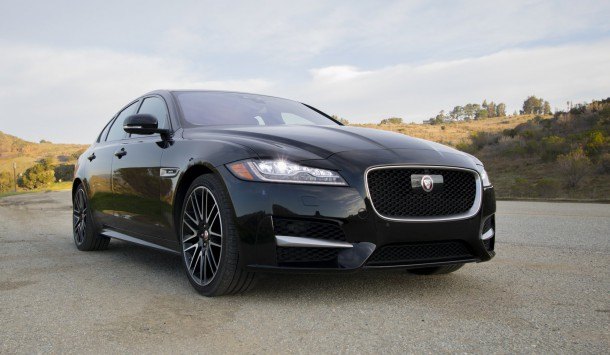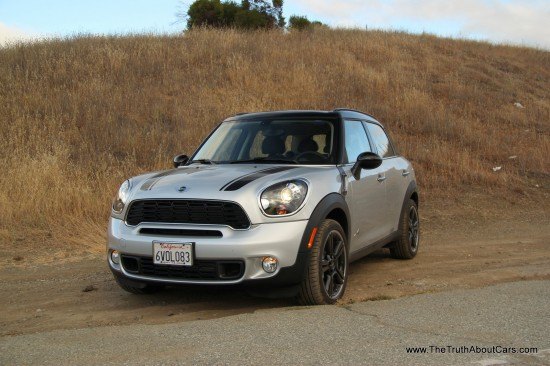#English
2016 Jaguar XF 35t R-Sport Review - The Tweener Kitty Goes Aluminum
Luxury car companies are practiced at the art of completely redesigning a car, yet styling those new models so much like their predecessors that you’d need an illustrated guide to tell them apart. Jaguar was the king of this design exercise in the ’90s and 2000s. My personal 2005 Jaguar Super V8 may look like Jags of yore inside and out, but under the wood and leather is a thoroughly modern aluminum luxury chassis that — with updates — underpins the modern XJ.
On the other side of the equation we have the XF. The 2008 model signaled a major shift for Jaguar’s styling, but under the sleek and modern exterior sat a reworked Jaguar S-Type chassis. The first generation XF won praise for the M5-chasing XFR and a design that came to define the modern Jaguar.
For the second generation of the XF, Jaguar played it safe with an image retaining the bulk of the styling from the previous generation. Under the familiar styling is Jaguar’s all new, aluminum-intensive iQ platform that’ll be the basis for the XF, XE, F-Pace and two other mysterious Jaguar Land Rover products in the next few years.
2016 Jaguar F-Type S Review - Row Your Own Kitty [w/ Video]
2016 Jaguar F-Type S 6-Speed Manual
3.0-liter AJ126 DOHC V-6, supercharged (380 horsepower @ 6,500 rpm; 339 lbs-ft @ 3,500-5,000 rpm)
6-speed ZF Manual
16 city / 24 highway / 19 combined (EPA Rating, MPG)
20.1 (Observed, MPG)
Base Price:
$65,995*
As Tested:
$89,250*
* Prices include $995 destination charge.
Jaguar has long occupied an interesting niche in the luxury segment due to not being a full-line brand. With a few exceptions, the English brand’s primary targets have been the E-Class/5-Series, the S-Class/7-Series and whatever high-end coupe and convertible the Germans are selling at the moment. That is changing now that Jaguar has decided to expand their portfolio with the 3-Series fighting XE and the brand’s first crossover, the F-Pace. (Yes, I know that Jaguar has had SUVs for decades called Land Rovers, but I digress.)
Part of Jaguar’s renaissance has been product based, and part has been returning to Jaguar’s sporting roots. While many folks still think of Jaguar as the brand that makes the “English Town Car” (yes, that is a Lincoln reference) like the 2005 Super V8 that sits in my driveway, my “stuffily” styled Jag was actually the start of the modern Jaguar we’re seeing today. You see, the X350 generation XJ was all-aluminium and as a result it could actually be described as “light and nimble” compared to an S-Class of the era. The F-Type harkens back to the old E-Type Jaguars of yesteryear, but this time Jag skipped ye olde styling and created one of the sexiest looking Jags ever. For 2016, Jaguar has re-tweaked the coupé and convertible adding AWD and a manual transmission.
You heard that right manual lovers: this kitty has a stick.
Honda Making English Its Official Language by 2020
In its 104-page annual sustainability report, Honda announced it would make English its official language by 2020, requiring all interregional communication be conducted in English. Similarly, English-language proficiency would be a requirement for promotion to management. The new mandate appears on Page 70 of the report.
Despite burying the lede, it’s a seismic change for the Japanese company. According to Automotive News, five years ago then-boss Takanobu Ito said — possibly in Japanese — that making English the official language of Honda was “stupid.” Five years from now, presumably all of Honda’s workforce, which includes more than 200,000 people — nearly three-quarters of it outside of North America — will be speaking the language.
Review: 2012 MINI Cooper S Countryman All4
MINI is the most unlikely successful new brand in America. Why? Because the brand’s “tiny transportation” ethos is at odds with America’s “bigger is better” mantra. Of course, these contradictory philosophies explain why the modern MINI is nowhere near as mini as Minis used to be. Still with me? Hang on to your hats because the German owners of the iconic British brand have decided American domination hinges on making the biggest MINI yet. Enter the MINI Countryman. Or as I like to call it, the MINI Maxi.




![2016 Jaguar F-Type S Review - Row Your Own Kitty [w/ Video]](https://cdn-fastly.thetruthaboutcars.com/media/2022/07/19/9242323/2016-jaguar-f-type-s-review-row-your-own-kitty-w-video.jpg?size=720x845&nocrop=1)














Recent Comments